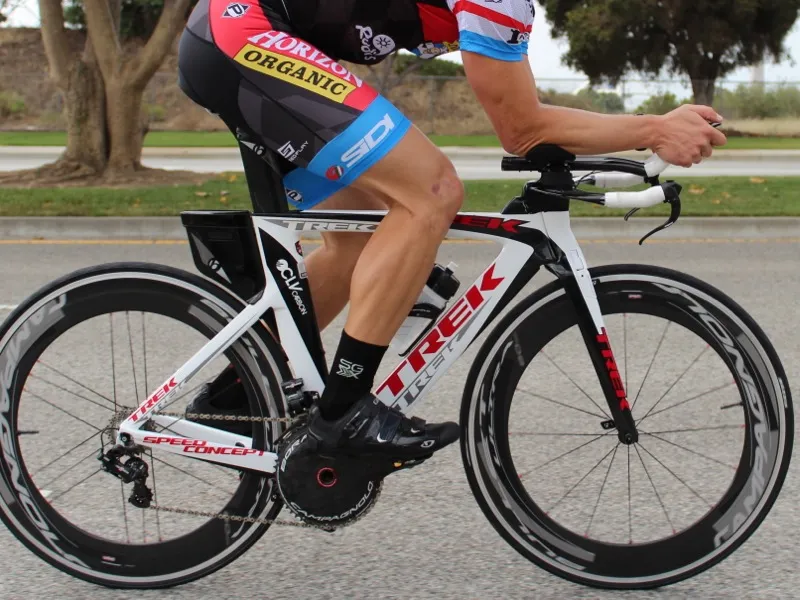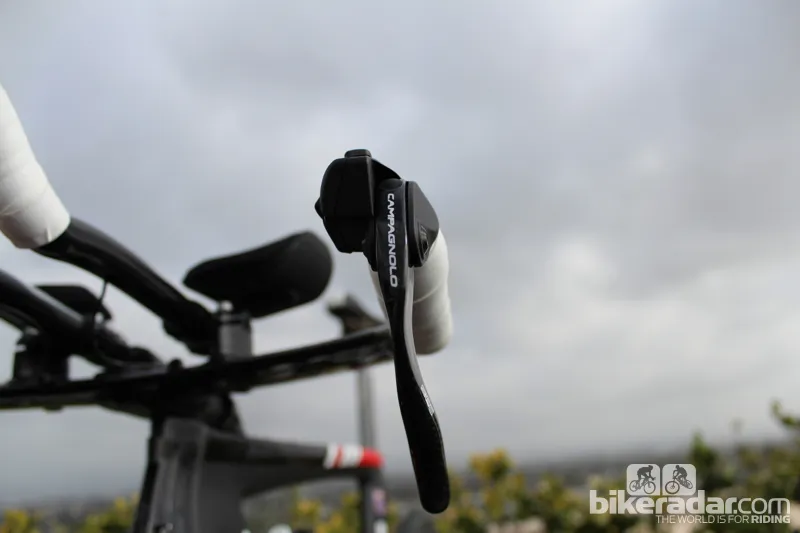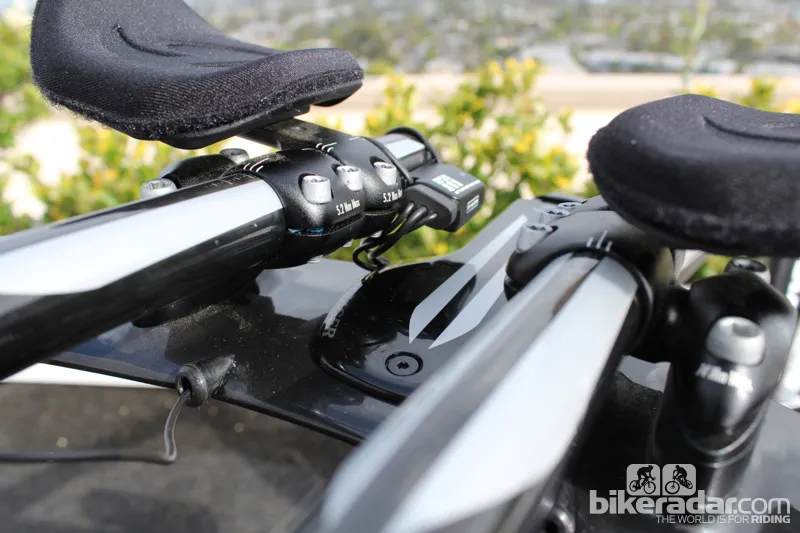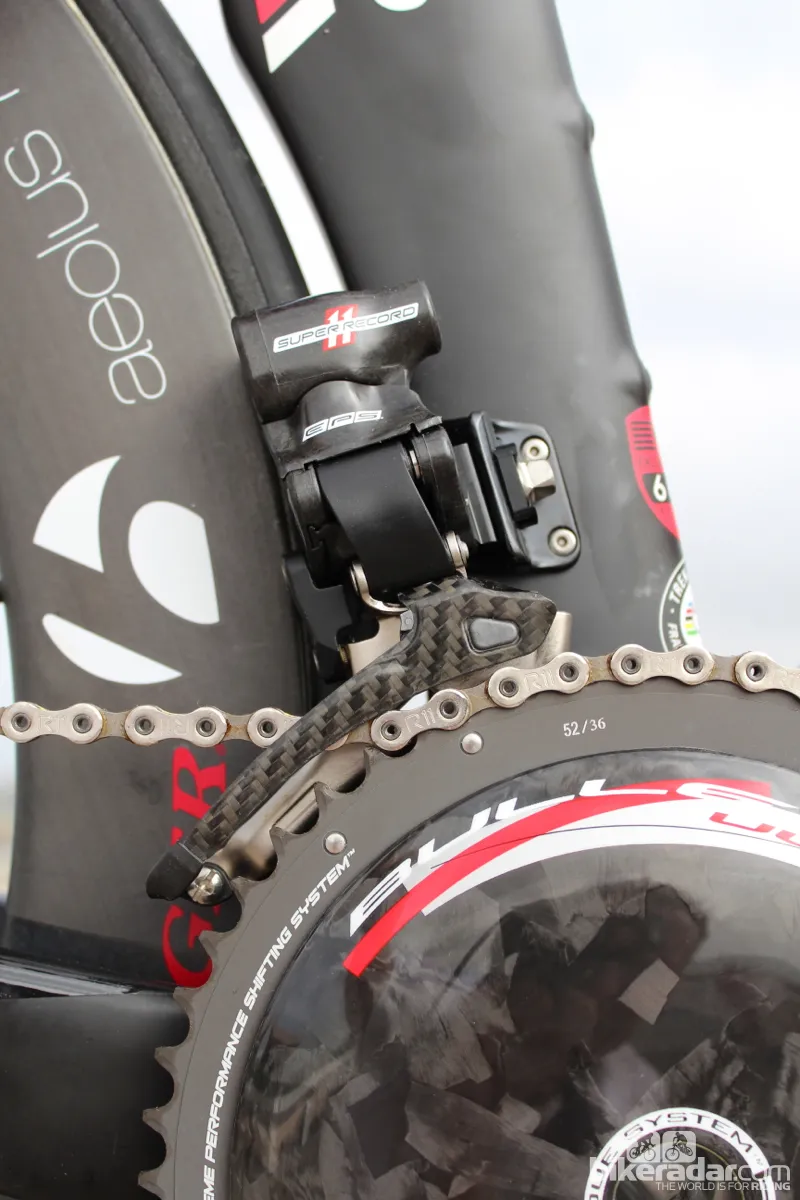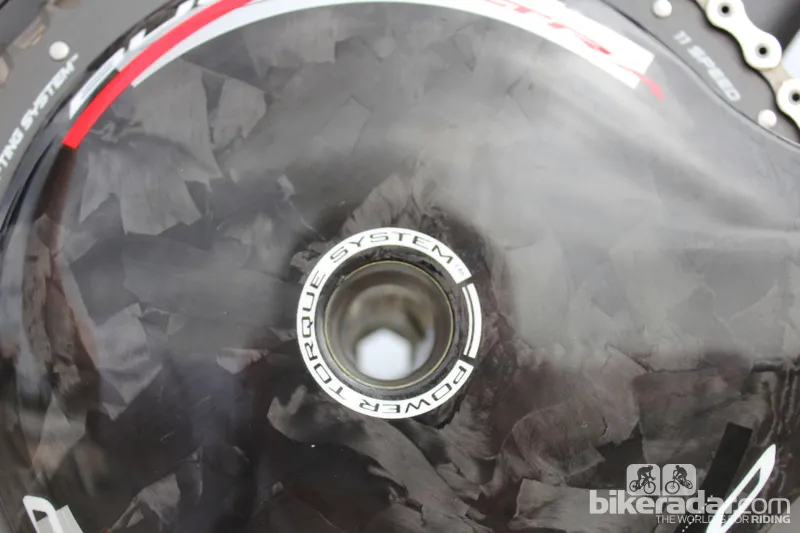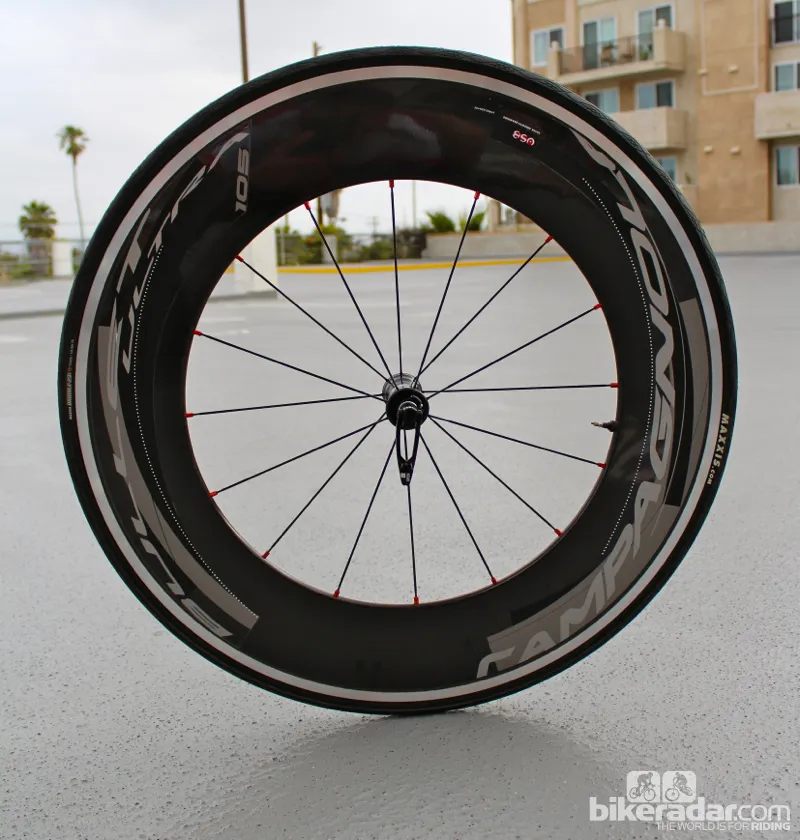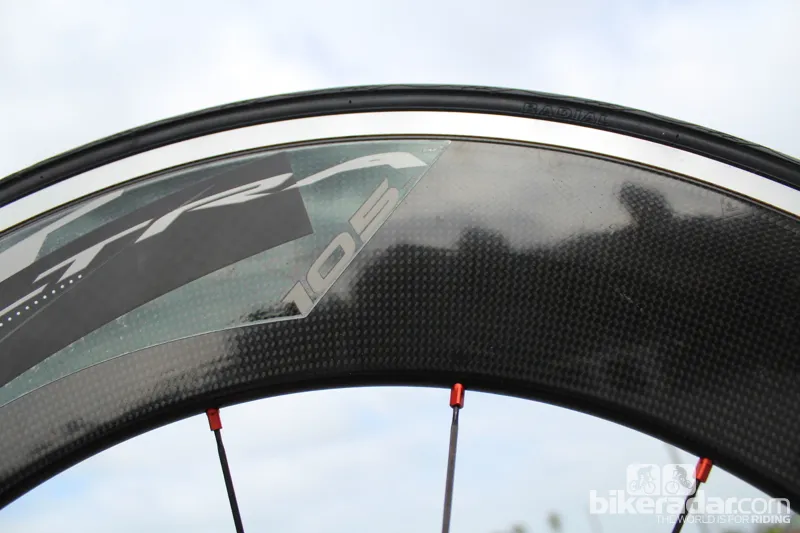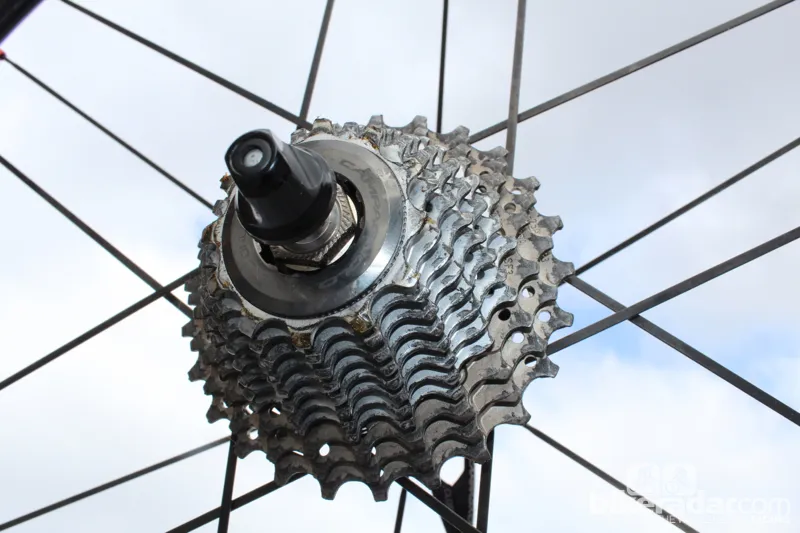Click. Clunk… zzztt.
Beyond the basics of precisely shifting gears, electronically, Campagnolo’s new EPS time trial/triathlon group makes a concerted effort to communicate with the rider through tactile and auditory feedback.
Campagnolo have long focused on ergonomics and component integration — the Italian company loves to point out that they made the world’s first gruppo in the 1950s. Campy fans celebrate the “positive” feel of the Ergo road shifters and derailleurs, where every movement of the hand is rewarded with a crisp click at the shifter and a pronounced noise at the cassette. With the EPS TT/tri electric group, Campagnolo engineers sought to simulate this feedback. After one 90-minute test ride, we can vouch for about 90 percent success.
While we need to spend more time with the group in order to completely flush out our opinions and to award our star rating, we also feel it’s worth sharing our initial impressions.
Campagnolo’s EPS TT/tri group consists of return-to-center bar-end shifters and integrated brake/shift levers. The 11-speed group works with the same motorized derailleurs and DTI (Digital Tech Intelligence) battery pack as the company’s road EPS group. The group also includes a chain, 11-speed cassette, a standard Campagnolo crank, brakes if needed, bottom-bracket cups and a battery charger.
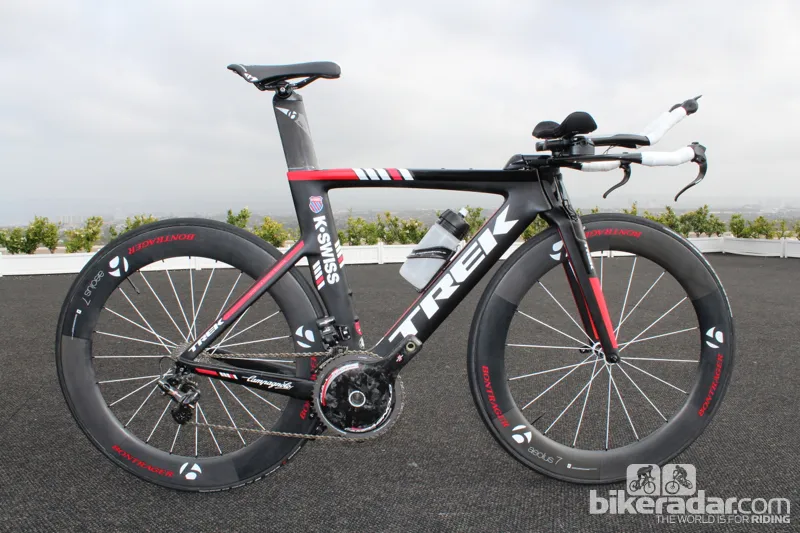
Campagnolo’s new EPS group for time trial and triathlon applications, mounted on a Trek Speed Concept K-Swiss team bike
Along with the new shifers, the company also presented two new aero cranks and the Bullet wheel, which has a structural carbon body with an aluminum rim bonded to it. The wheels come with either 50-, 80-, or 105mm rim profiles.
The Test Ride
To show off their new group, Campagnolo hung their new EPS components on Trek Speed Concept bikes, and complemented the package with their 105mm Bullet wheels. They then sent a group of journalists out for a 90-minute test ride that included some short hills and light wind.
Some of the riders experienced mechanical issues with the new components during this short ride. Those issues may be attributed to improper initial set-up, or a sign of a greater problem. Again, it’s important to stress that a longer test period is needed to fully assess the group’s performance.
The Good
BikeRadar’s test group shifted crisply. Under heavy pedal load, the rear derailleur moved the chain up and down the cassette, with a decisive ‘clunk’ each time the chain dropped down a cog.
The buttons on the brake lever — separated by enough space to rest your thumb — give tactile feedback with a ‘click’ each time they are depressed. The top button moves up the cassette; the inner button moves the chain down.

The integrated brake-lever shifter has one button on the top and another on the inside
Both the brake lever and the end of the body are comfortably shaped for multiple hand positions.
As no mechanical leverage is needed, the bar-end shifters are much shorter than Campagnolo’s standard bar-end shifters. Directional shifting is the same as with mechanical bar-end shifters, but the shifter pops back to center once you release it. The longer you hold the shifter down (or up), the more gears it shifts.
After the rear derailleur shifts, the front derailleur automatically trims to prevent chain rub on the cage — but there is a half-second delay between when the rear moves and when you hear the front adjust with a 'zzztt'.
Similar to Shimano's Di2 electric system, all adjustments to the derailleurs are made electronically via the shifters. While a brief education is required (hold a button on the lever body until the DTI light changes colors to indicate "zero setting"), adjusting the derailleurs with the shift buttons is easy. It can also be done while riding, if need be.
The Bad
Campagnolo tout that the EPS derailleurs have more power than a mechanical system. When shifting from the small ring to the big ring, the EPS derailleur pushes up with 52nm of force, compared to the 31nm you’re able to generate with a Campagnolo mechanical derailleur, the company claims. We found that when pedaling hard in the small ring — such as when accelerating out of a corner — the derailleur could not shift up onto the big ring without its rider backing off on the power.
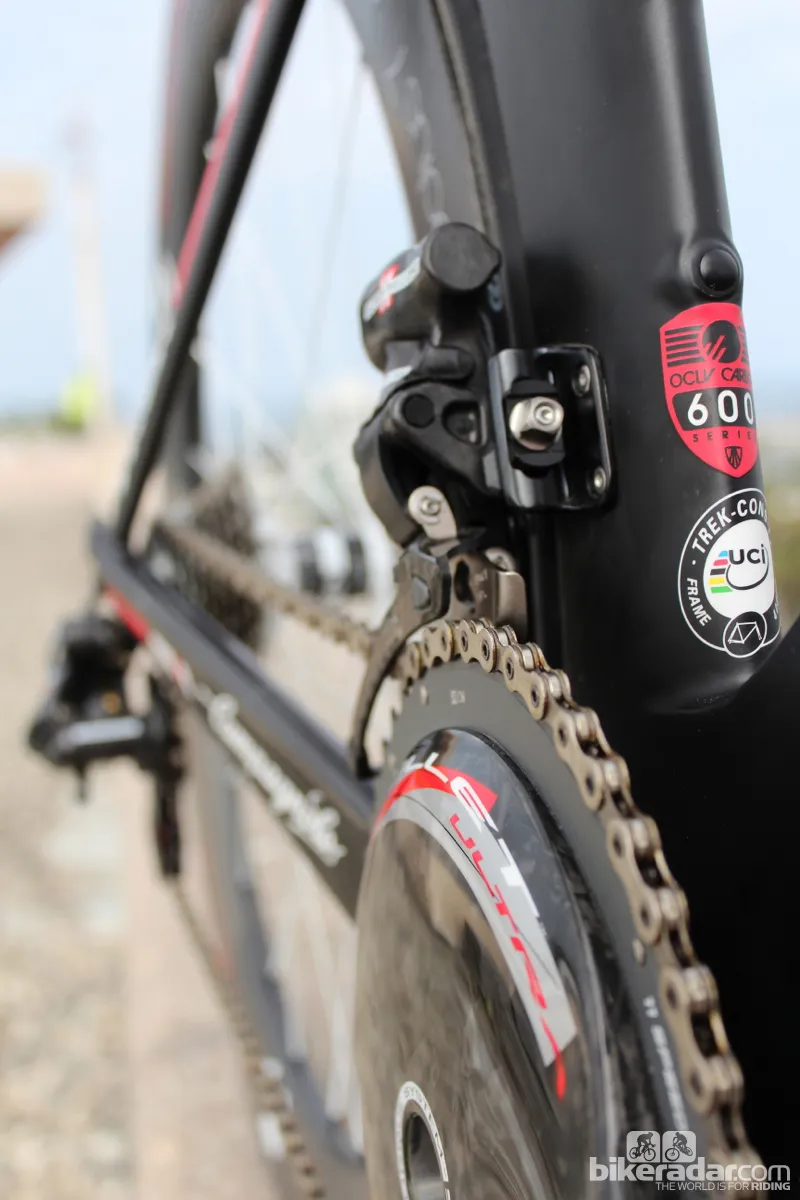
The front derailleur seem to work as powerfully as we expected
When pedaling at a sustainable power, however, the front derailleur would shift up. In this respect, we found, the EPS systems isn’t worse than a mechanical system; it just has no advantage over the traditional set-up.
Unlike a mechanical system, however, the EPS levers do not give any tactile or auditory feedback as to how many gears are being shifted when the button or the lever is held down. This is not a deal-breaker thing, but this is why we say the goal of mimicking the mechanical group’s ergonomics and tactile feedback was 90 percent achieved.
The Unclear
A few journalists had issues with chain rub or even dropped chains on their test bikes. It is impossible to know the cause of these issues for certain, but the fact that the bikes had just been assembled for the test causes us to suspend judgement on these issues until a longer-term test is possible. One theory was that the Speed Concept's relatively short chain stays required some fine tuning of the front derailleur.
Another mystery: the price. Campagnolo have not yet released pricing on the group.
Related New Products
Campagnolo has two new aero cranks: the Bullet Ultra and Bora Ultra. Both feature a ramp-and-pin style shifting system, which Campagnolo calls "XPSS". The chainrings have eight upshift and two downshift zones. Both crank models are made in Italy and feature an aerodynamic cover and ceramic bottom bracket bearings.
The cranks differ by way of axle design. The Bullet utilizes a single axle, while the Bora has Campy's Ultra-Torque semi-axle design, connecting in the center with a Hirth joint. The Bullet offers three chainring combinations: 34/50, 36/52 and 39/53. Bora comes in three larger gear combinations: 39/53, 42/54 or 42/55.
A new wheel range was also introduced, the Bullet, which has a structural carbon body with an aluminum rim bonded to it. The wheels come in 50, 80 and 105mm rims. On our short test ride the 105mm wheels felt good — not particularly light or snappy, but easy enough to accelerate and relatively stable in crosswinds. The 105mm height is a very tall front wheel; Campagnolo sells individual wheels, and pairing a shorter front with a taller rear wheel is a popular option.
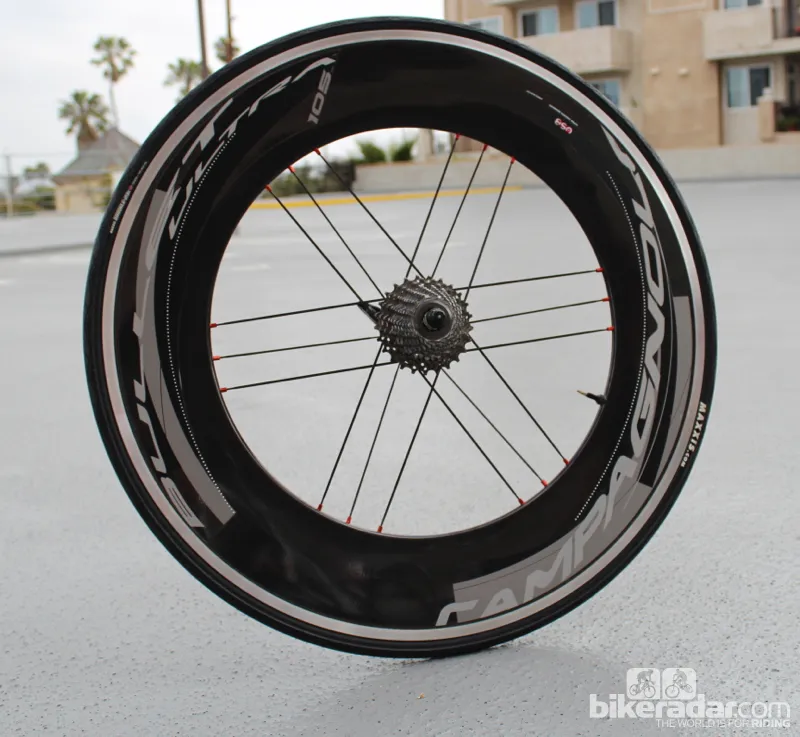
The new Campagnolo Bullet rear wheel, with a 105mm rim
As with the group, pricing has not yet been released on the cranks or wheels.
